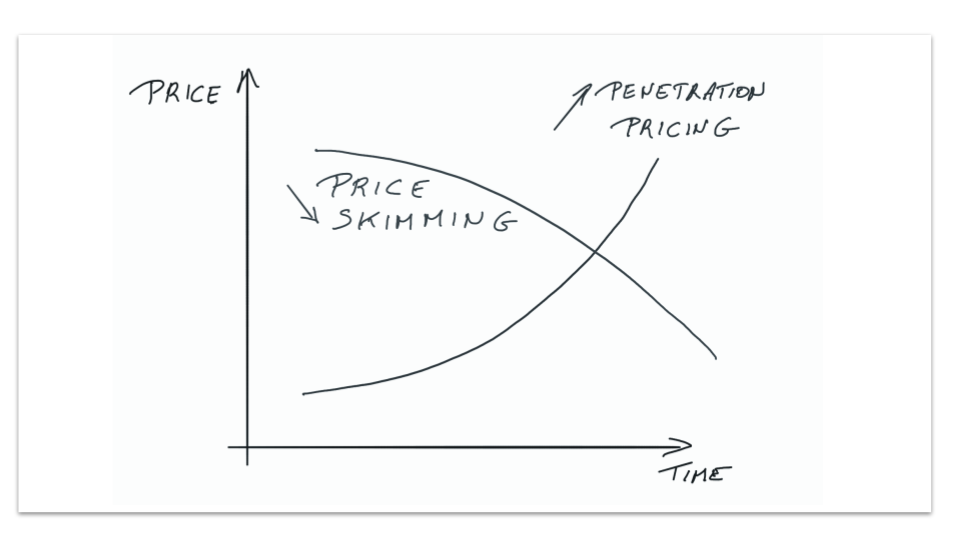Top 5 B2B Marketing Tactics SaaS Businesses Need For Growth In 2023

There has been a significant increase in the number of B2B SaaS companies operating — particularly during the last year. With such a busy and expanding market, it can be challenging to secure customers and make sure your SaaS business stands out. Here we are going to layout five marketing tactics that you can employ to succeed in growing your business and in retaining customers.
1. Identify Your Go-To-Market Strategy (GTM)
- Know your Value Proposition
Your SaaS value proposition is curated from an understanding of who your audience are and their reasons for wanting your product — this in turn will help you understand how your business can succeed. It is important to have a clearly defined idea of your target audience and the market you are aiming your product at. Your product should be helping customers to resolve a problem — after all, if there is no market need, people won’t buy your product.
This is the ‘why’ of your customers’ interaction with the product — to be effective, your marketing strategy needs to be customer-focused and driven by market demand. This will drive your business growth and success by increasing demand-based profit.

Suggested reading: For more information on how to determine what you value proposition is, check out our blog — How to Create the Perfect Value Proposition
- Know your Competition
In order to market effectively, your business must understand both the wider market surrounding your domain and the competition it presents directly to your product. Without knowing these, you will not be able to curate a unique selling point (USP) for your product to make it stand out. This leads into my next point.
- Develop a Niche
Your product must stand out from its competitors. Without a USP, you seriously risk your product simply blending into the crowd. This is a concern for lots of reasons, but specifically, your product will not sell well because it is not considered new or unique. Moreover, if this is the case for your product, you may well be forced to modify your SaaS pricing model to stay competitive, even if it erodes your profit margin.
- Consider Pricing Strategies
This one loops back to the competitor reference in the second point. You need to understand what products you are in direct competition with, and how they are priced first. Then you can decide whether to use penetration pricing to undercut competitors or if you will set your pricing strategy at the same level as theirs (or equally above theirs).

- Identify your success metrics and Set Business KPIs
Key performance indicators (KPIs) will allow you to understand if your product and business as a whole are operating successfully or not — not least, they will afford you the capacity to move on with your next stage or strategy.
“Begin by building a rapport with customers, in which you demonstrate your knowledge, skills and the value of your product. Similarly, ask them for feedback on the product. This will allow your customers to feel valued and appreciated, as well as more confident in your services,” says John Graham, a content marketer at 1 Day 2 write and Write my X.
Another key area to consider are the purchasing options. The more flexible you can make these, the more likely you are to be able to secure a sale. In general, customers appreciate having the freedom to choose from a variety of options. Offering both monthly and yearly contracts will enable you to attract a more diverse customer base and increase your sales.
Suggested reading: For more information on how to select the right GTM strategy for you, check out our blog — How to Choose the Right Go-to-Market Strategy?
2. Produce High-Quality Content Marketing
By providing customers with high-quality, valuable content you can achieve the following:
- Demonstrated domain authority and improved brand reputation.
- Platform for demystifying your product.
- Higher visibility in search engines.
- More referral and social traffic.
- Increased conversion potential.
- Decreased marketing costs.
- Stronger customer/reader relationships.
Take time to reassess the content you have on offer and make sure that it’s offering something of value to your customers. There are many different types of b2b saas content marketing out there to suit the customer base you are trying to impress. All you need to do is make sure that your content marketing is tailored to the audience you are targeting.
“It can be useful to include third party research, as this adds more authority to your own content. Any facts, references, examples of data used should be up-to-date. It’s also important to ensure that you review your content for keyword optimization, as well as refreshing images and changing titles and headings to more targeted and relevant ones instead,” suggests Linda Reed, a writer at Brit Student and Next Coursework.
Suggested reading: For more information on how your content marketing strategy can generate business growth, check out our blog — 6 B2B Content Marketing Tips for SaaS Companies that Convert
3. Offer Customers A Freebie
Two options are a freemium or a free trial model — or neither of course, but we wouldn’t advise this!
Free trials:
These are usually time-bound — typically one month — and they provide users with access to only a selection of the product/service’s full features.
Pros of Free Trials:
- Generates dependency: Gives time to let users get ‘hooked’ on the product, or start to use it in their everyday life, before requiring a payment which may lead to the likelihood of conversion.
- Free to use: There is no initial or upfront cost to the user at the beginning, which is a selling point in and of itself.
- Demonstrates value: Free trials will allow information about the basic application to be shared with the world through word of mouth of users who try it.
Cons of Free Trials:
- Renewal frustrations: Some people may get irritated at the fact that they have to pay to keep using the service when it was advertised as free to begin with.
- Scamming: People can create multiple accounts to keep accessing the free trial over and over without paying for it — scamming the system.
- Insufficient trial period: They sometimes do not allow people to use the system long enough to get hooked on it.

Freemiums:
Freemiums allow users to fully access the basic version of the product/service, with no time constraints, and at no cost. However, more advanced features or services are provided at a premium. The key is to ensure that users upgrade to a premium instead, by providing them with a better experience, including additional storage, more flexibility and other personalized customizations.
Pros of Freemiums:
- More product for no cost: At the beginning, people believe the entire system is free, which will increase the amount of people who download it naturally.
- Reduced scamming risk: The expensive and important services are kept back and reserved for those who actually choose to pay for the system, reducing people’s ability to scam the system.
Cons of Freemiums:
- User frustration: People can often feel ‘duped’ as the advertising led them to believe that the entire system was free and it was not.
- Piecemeal product exposure: People do not get the ability to use the entire system, so they may not be able to see or understand what is so great about it.
4. Make It Easy For Prospects To Contact You
One of the most important aspects of any successful B2B marketing strategy is the ease that customers can reach you. You need to ensure that your prospects have a variety of ways to contact you, including via email, telephone, a contact form on your website or through a live chat option.
It’s worth installing a live chat widget on your website, if you don’t already have one. Similarly, consider introducing a video interaction option, which can allow customers to make video consultations with you. The easier it is for a customer to get in touch, the more likely they are to do so, and in turn, the more likely they are to go on and make a purchase.
Struggling to build a marketing campaign that engages prospects? 🛎️
Download this FREE guide to learn the best and most effective tactics to growing web traffic, leads and closing more business than ever before!
5. Utilize Co-Marketing
It can be useful to work with another business that has a similar audience to your own so you can co-market. You could co-host an event (physical or digital) or guest blog for one another. Alternatively, you could hire a digital marketing agency, such as Gripped, who can help to increase your reach, as well as your visibility. Digital marketing agencies have the benefit of being able to provide a focused service, which is directly aimed at increasing your conversion rate.
Suggested reading: For more information on how to determine your compatibility with a digital marketing agency, check out our blog — How to Know If You’re Agency-Compatible (And If an Agency Is Compatible With You)
Now You Know How to Grow
Marketing strategies are evolving all the time. To make your SaaS business stand out it’s important that you continuously review the needs of your customers and ensure you’re providing them with relevant, updated content. The more engaged your prospects are, the more successful you’ll be, and the higher your chances of retaining loyal customers. Content creation and trial strategies will allow your business to expand its approach to marketing, and hopefully hook more customers to your product and business as a whole. Hopefully, these B2B marketing strategies will allow you to build your business marketing strategy and understand a little bit more about the marketing and innovation world.
Michael Dehoyos is an experienced content marketer and editor PhD Kingdom and Write my assignment, where he works closely with companies of all sizes to improve their marketing strategy concepts. In particular, he enjoys working with companies to create more meaningful relationships and engagement with customers. Michael regularly writes articles for Origin Writings, as well as having contributed to numerous other websites and publications.
Reach Your Revenue Goals. Grow MRR with Gripped.
Discover how Gripped can help drive more trial sign-ups, secure quality demos with decision makers and maximise your marketing budget.
Here's what you'll get:
- Helpful advice and guidance
- No sales pitches or nonsense
- No obligations or commitments



Book your free digital marketing review
Other Articles you maybe interested in
B2B Demand Generation: Should You Adopt This Strategy in 2025?
Discover the essential tactics and strategies for B2B demand generation in this comprehensive guide.
A Guide to the Top 10 Marketing Agencies for B2B SaaS Companies: A Comprehensive Comparison Guide
The B2B SaaS landscape is booming—and it’s never been more challenging to break through the noise. Between new entrants, accelerating product cycles, and sky-high expectations from digitally savvy buyers, marketing your SaaS offering effectively requires a nuanced, tech-first approach. That’s where specialised marketing agencies for B2B SaaS companies come in. Unlike generalist agencies, these specialised…
The 10 Best Full Service Digital Marketing Agencies Updated for 2025 (UK List)
Navigating the digital marketing landscape has never been more complex—especially if you’re a B2B tech or SaaS company aiming to stand out in an increasingly crowded space. Between SEO, content marketing, paid campaigns, CRO, marketing automation, and social media engagement, the sheer volume of channels can be overwhelming. That’s where a full-service digital marketing agency…


